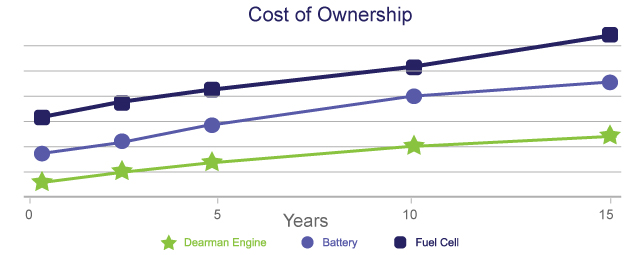Market Demand
During this decade, CO2 targets will drive a dramatic shift in the types of new vehicles produced.
The low-carbon vehicle market is predicted to grow faster than any other low-carbon sector this decade, increasing to $473bn (£293bn) by 2020.
Sales of electric and fuel cell vehicles are not approaching the levels required to fulfil the demand. Electric vehicle sales in the UK were 1,000 last year and in the United States less than 10,000. Total worldwide sales were less than 30,000 for 2011.
Purchase cost and total cost of ownership will remain key drivers; along with ease of refueling, reliability and safety.
While take-up of EVs will increase rapidly this decade and beyond, to meet our carbon reduction targets and customer demand, there needs to be low barrier-to-entry, zero emission engine technologies which are low cost and simple, fast to refuel, can be mass-produced and fast to market.
Partners

